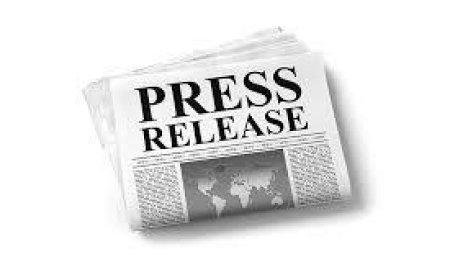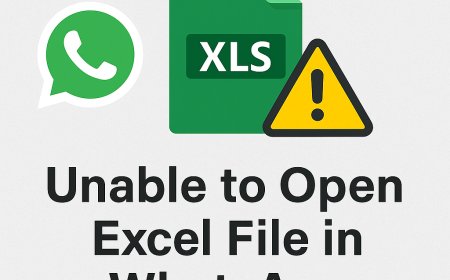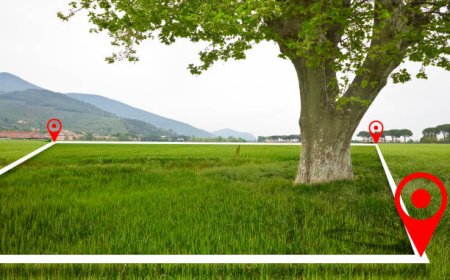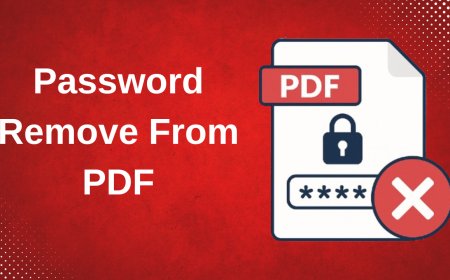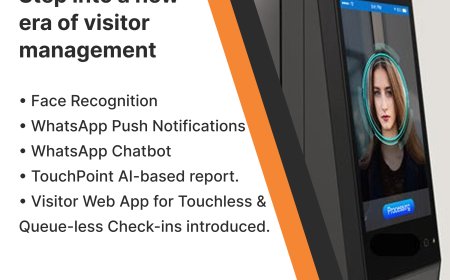Plagiarism Checker: Preserving Uniqueness in the Digital Era
A plagiarism checker is a vital resource for anyone who values authenticity and intellectual honesty. Whether you're writing an essay, publishing an article, or creating marketing content.

Introduction
Being unique is not only a virtue but also a need in today's content-driven society. With the rise of digital media, blogs, academic publishing, and online learning platforms, ensuring the uniqueness of written work has become critically important. Whether you work as a company professional, blogger, teacher, or student, it's critical to retain content authenticity. A plagiarism checker comes in quite handy in this situation.A digital program called a plagiarism checker compares a text to billions of online sources, databases, and periodicals to find instances of copied or plagiarized content. As the importance of intellectual property protection continues to grow, the use of plagiarism checkers has become standard practice in academia, journalism, and corporate settings alike.
Why Is Using a Plagiarism Checker Crucial?
Maintaining Academic Integrity
Academic integrity is critical to scholars and students. Colleges and universities have strong anti-plagiarism regulations, which can result in harsh sanctions including suspension or failing marks. Using a plagiarism checker helps students verify that their essays, theses, or research papers are free from unintentional plagiarism, reinforcing honesty in their academic endeavors.
Upholding Professional Ethics
In the professional world, originality builds trust. Content marketers, journalists, and bloggers rely heavily on producing unique material to engage their audiences and establish credibility. Plagiarism can tarnish reputations and lead to legal consequences. Professionals submit work that is genuine and morally sound thanks to a plagiarism checker.
Understanding Plagiarism
Understanding what plagiarism is is essential before using plagiarism checkers. Plagiarism is the act of presenting someone else's ideas, expressions, or work as one's own without giving due credit. It can take many formscopying exact words, paraphrasing without credit, or even submitting someone elses work entirely.
There are two main types of plagiarism:
Intentional plagiarism is the willful copying or use of another person's work.
Unintentional plagiarism includes things like excessive paraphrasing or inadequate source citation.
Regardless of the reason, plagiarism can have serious consequences, including as academic penalties, harm to one's reputation, or even legal action.
See more article: plagiatsprfer
What is a Plagiarism Checker?
Software that checks documents for duplicate content is called a plagiarism checker. It uses algorithms to compare the submitted text with a vast index of existing materials, including web pages, academic papers, books, and online articles. The checker then highlights sections that are identical or similar to existing content and provides a percentage-based originality score.
Some of the most popular plagiarism checkers include:
-
Turnitin
-
Grammarly
-
Copyscape
-
Quetext
-
SmallSEOTools
-
Plagscan
These tools offer detailed reports that help users revise their work and ensure its free from unintentional copying.
Types of Plagiarism Checkers
There is a variety of plagiarism checking tools available, each catering to different needs:
Free Plagiarism Checkers
Free tools are popular among students and casual users. They usually offer limited features, such as a restricted word count per check or a smaller database. While useful for quick scans, free checkers may not be reliable for comprehensive plagiarism detection.
Paid or Subscription-Based Checkers
These offer extensive scanning capabilities, access to vast databases, and detailed reports. They are widely used by academic institutions, publishers, and professionals who require high accuracy and in-depth analysis. Examples include Turnitin, Grammarly Premium, and Copyscape.
Institutional or Enterprise Solutions
Universities and large organizations often use customized plagiarism detection systems integrated with their learning management systems. These solutions are designed to meet specific academic or business requirements, providing thorough checks and maintaining data privacy.
Why Use a Plagiarism Checker?
Academic Integrity
In schools and universities, originality is a cornerstone of academic integrity. Students are expected to produce their own work and cite sources properly. A plagiarism checker helps students avoid accidental plagiarism and allows teachers to verify the authenticity of submissions.
Content Creation
Writers, bloggers, and marketers produce large volumes of content regularly. Repetition or overlap can sometimes occur unintentionally. A plagiarism checker ensures that every blog post, product description, or article is 100% unique, which is essential for SEO rankings and brand reputation.
Publishing and Journalism
Editors and journalists must adhere to ethical standards that demand original reporting and writing. A plagiarism checker enables media professionals to double-check articles before publication, avoiding reputational damage and legal trouble.
Legal Protection
Copyright infringement may occur when someone uses another person's intellectual property without their consent. Plagiarism checkers serve as a preemptive measure to safeguard against such issues.
How Does a Plagiarism Checker Work?
A plagiarism checker typically functions through a process involving:
-
Text segmentation: The text is divided into more manageable sentences or phrases.
-
Database comparison: These sections are contrasted with scholarly databases, proprietary libraries, and indexed web material.
-
Match detection: Any phrase or sentence that closely matches another source is flagged.
-
Report generation: The tool provides a detailed report showing matching content, the source link, and a percentage of originality.
Most checkers also offer citation suggestions, helping users to properly attribute any matched text to its original author.
-
Qualities to Consider in an Effective Plagiarism Detector
-
Not every plagiarism detector is made equally. It's crucial to search for specific critical qualities while selecting a tool:
-
Accuracy: Both exact matches and paraphrased content should be detected by a trustworthy checker.
-
Database size: The larger the index of sources, the more thorough the results.
-
Speed: Fast scanning is helpful, especially for users working on tight deadlines.
-
User interface: A simple, easy-to-use interface enhances the user experience in general.
-
Integration: Some tools integrate with Google Docs, Microsoft Word, or learning management systems for seamless usage.
-
Report clarity: The final report should be easy to understand, highlighting problematic sections clearly.
Benefits of Using a Plagiarism Checker
? Ensures Content Authenticity
With a plagiarism checker, you can confidently submit or publish content knowing its entirely your own.
? Saves Time and Effort
Rather than manually cross-checking your content with existing sources, a plagiarism checker automates the process efficiently.
? Boosts Professional Reputation
Consistently submitting original work helps build trust and authority in your academic or professional career.
? Enhances Learning
For students, identifying areas of unoriginal content encourages better understanding and improvement in writing skills.
Limitations and Considerations
Despite their strength, plagiarism detectors are not infallible. Among the restrictions are:
-
False positives: Common phrases or widely used expressions might be flagged unnecessarily.
-
Database gaps: If the tool lacks access to a particular source, it might miss potential plagiarism.
-
Language limitations: Some tools only support English, making them less useful for multilingual texts.
Therefore, it's important to use plagiarism checkers as a guide rather than a final verdict. Human judgment is still necessary for interpretation and proper citation.
Ethical Use of Plagiarism Checkers
Using a plagiarism checker ethically means:
-
Not relying solely on the tool to "fix" a plagiarized document.
-
Understanding why content was flagged and learning how to properly cite or rephrase.
-
Respecting intellectual property and promoting a culture of originality.
Teachers, students, and professionals alike must treat plagiarism checkers as educational and ethical aids rather than shortcuts.
Conclusion
In an age where digital content is rapidly expanding, originality has never been more critical. A plagiarism checker is a vital resource for anyone who values authenticity and intellectual honesty. Whether you're writing an essay, publishing an article, or creating marketing content, these tools help ensure your words are truly your own.By promoting a habit of checking for plagiarism, we not only avoid accidental errors but also foster a greater respect for creative and academic work. With the right tool and ethical intent, maintaining originality becomes a simple yet powerful part of the writing process.
For more and latest article: Clicking Here



